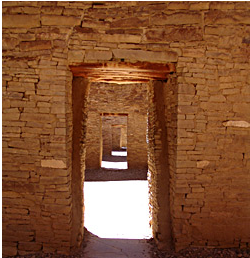Publication Date
12-1-2009
Abstract
This research examined whether the prevalence and skeletal distribution of osteoarthritis (OA) differed between wild and captive great ape skeletons. A secondary, but important, aspect of this research focused on the development of improved aging techniques based on methods commonly used on human osteological samples. Tests were conducted pertaining to the effect that wild versus captive status, sex, and species has on vertebral body lipping, marginal lipping, and eburnation. Age was considered a co-factor. Of the aging methods examined, use of the basilar suture to distinguish between adult and old adult specimens proved to be very imprecise. The ribs and auricular surface proved to be of limited value in aging the ape skeletons, while the acetabulum demonstrated potential for use as an aging indicator, although it is not recommended for use in isolation. Molar dental wear proved to be the most viable single indicator of age explaining over 78% of the variation seen. However, a model that combined wear of molars 1 and 2 with certain features of the acetabulum explained over 90% of the variation seen and was the model chosen for aging the apes in this sample. The effect that wild versus captive status, sex, and species had on vertebral body lipping, eburnation, and marginal lipping was analyzed, with age as a co-factor. It was found that status is a significant predictor of the prevalence of both vertebral body lipping and marginal lipping, but not of eburnation with captive apes suffering significantly more vertebral body lipping than wild apes. Sex is not a significant predictor of disease prevalence for any skeletal marker. Species differences are evident in vertebral body lipping and marginal lipping, but not in eburnation. In general, chimpanzees are the least frequently affected and gorillas the most frequently affected. Age has an effect, primarily in vertebral body lipping and marginal lipping, with older individuals being more affected than younger individuals. In summary, while wild versus captive status, species' differences, and age are factors in the development of vertebral body lipping and marginal lipping in many joints, the presence of eburnation is extremely rare in the great apes with very few individuals being affected regardless of status, sex, species, or age. Thus, the results highlight the complex nature of osteoarthritis and enforce the idea that osteoarthritis is markedly multi-factorial and that disease prevalence and patterns are not easily understood or interpreted.'
Keywords
Osteoarthritis, apes, wild vs captive, chimpanzee, gorilla, orangutan, disease
Project Sponsors
The Leakey Foundation
Document Type
Dissertation
Language
English
Degree Name
Anthropology
Level of Degree
Doctoral
Department Name
Anthropology
First Committee Member (Chair)
Osbjorn M. Pearson
Second Committee Member
Heather Edgar
Third Committee Member
Robert Jurmain
Fourth Committee Member
Jane E. Buikstra
Fifth Committee Member
Edward Bedrick
Recommended Citation
Poe, Demelza J.. "The Prevalence of Osteoarthritis in Wild vs Captive Great Ape Skeletons." (2009). https://digitalrepository.unm.edu/anth_etds/53

